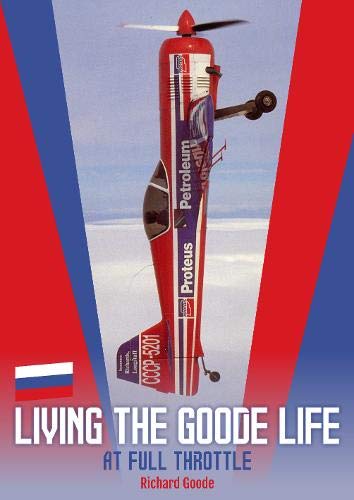
This is an extraordinary story, beginning with a bare-foot colonial childhood, and indeed not speaking English until he was four, yet ending up at Cambridge, ultimately dealing at the highest levels of the Russian aviation industry. Richard Goode’s life has been a fascinating series of activities, both social and business, dealing with an incredible range of people from the notorious Ugandan dictator, Idi Amin, to whom he was selling banknotes (legally) to a car dealer who was embroiled in the Brinks-Mat gold robbery (illegally); dealing with Russian spies at the behest of MI5; international corporate headhunting and aerobatics at the highest levels. And all this with a huge zest for living life to the full.
Highlights of his life have included:
- as a teenager, hitchhiking from London to Cape Town
- becoming one of the world’s top aerobatic pilots and making his own very successful aerobatic aircraft
- buying the first privately owned Russian aeroplane in the West and then acting as a sales agent for Sukhoi
- selling over 450 aircraft and the world’s only privately-owned Harrier jet fighter
- establishing a barely-credible business sending people from the West to fly front-line Russian jet fighters
- Totally restoring three significant English listed country houses and a run-down tea estate in Sri Lanka
- Owning a wide variety of cars from old bangers to Jaguar XKs, vintage Rolls-Royces to modern Ferraris
Throughout, his life been anything but straightforward, with a fair share of crashes and calamities. Financially, he narrowly avoided meltdown in the ruinous Lloyds insurance crash of the 1990s; he successfully faced up to the Russian Mafia and was even served with an Interpol arrest warrant! Most dramatic was the structural failure of his aerobatic plane during a public display resulting in a barely-survivable, catastrophic accident, leading to three months in a hospital bed.
We live in a very sanitised and protected world and it is refreshing to read this story about a man who has been prepared to take risks and also to accept the consequences of them, whether positive or negative. A thrilling, real-life tale.
This book is complemented by a rich selection of appealing and fascinating images.
- Jacketed Hardback, 376 page extent, 240 mm x 170 mm in portrait format
- Over 150 colour & b/w photos
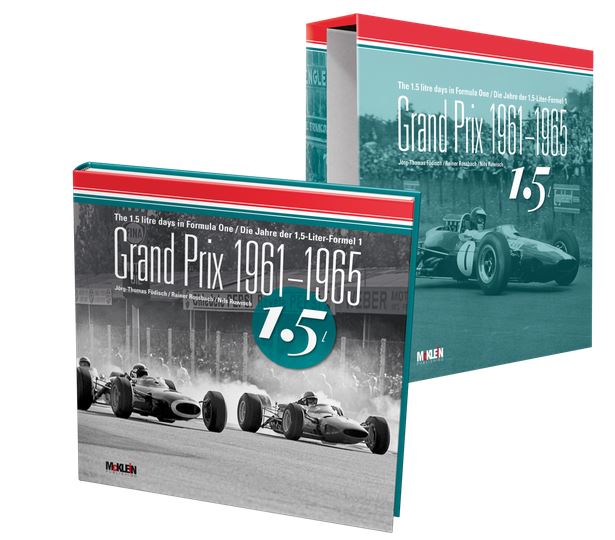
IN STOCK!
From January 1st, 1961, a new set of technical regulations were applied in Formula One. From that date, all the naturally aspirated engines had to be of a maximum displacement of 1.5 litres in an attempt to reduce the speeds. The power of these engines was initially about 150 bhp though, at the end of the era, this had risen to more than 220 bhp. At first the Formula One cars of that time were underestimated, which was being unfair to the achievements of the engineers and of the drivers involved. To operate these cars at their limits demanded a high level of driver skill.
Initially the British teams had opposed the new rules and thus entered the new Formula One at a technical disadvantage. Ferrari was better equipped with new 1.5 litre engines and thus the Scuderia won both the Driver and the Constructor Championships in 1961 and was able to repeat this success in 1964. Lotus was just as successful with the outstanding Jim Clark, and BRM driver Graham Hill also won the title. After the British had caught up with engines like the Climax V8, Lotus also pointed the way into the future with the Type 25, the first monocoque Formula One car.
The 1.5 litre formula saw the participation of some of the best Formula One drivers of all time with Stirling Moss, Graham Hill, John Surtees, Dan Gurney, Jim Clark and Jackie Stewart. And despite all the prophecies of doom that the “new” Formula One would not be exciting thanks to a lack of engine power, some thrilling sport was on offer during this five-year period. These Grands Prix were also a real spectacle for the spectators, because they were very close to the action.
Jörg-Thomas Födisch, Rainer Rossbach and Nils Ruwisch reveal in this book – using many previously unpublished photographs of which most are taken from the Bernard Cahier archive – the attraction and excitement generated by the forty-seven Grands Prix that constituted the World Championships for Drivers under the 1.5-litre Formula One regulations.29 x 29 cm, hardcover in a slipcase
Pages: 360
Pictures and illustrations: 220 in colour and 325 in black-and-white images
Text English and German

The life of Derek Bennett and the success of Chevron Cars are inextricably entwined in the Chevron Story. After years eking out a living mending cars in back street garages, Derek rose to become one of the world’s leading builders of racing cars. Chevron is the fairy tale story of how he did it.
Stars such as Alain Prost, Niki Lauda, Brian Redman, James Hunt, Keke Rosberg, Nigel Mansell, Graham Hill, Peter Gethin and Jody Scheckter all drove Chevrons. In his book “Chevron – The Derek Bennett Story” – David Gordon explains how they got on.
After travelling many thousands of miles to trace the people who knew and worked with Derek, motor racing journalist David Gordon tells the Derek Bennett story and that of his brainchild Chevron Cars, charting the contributions of the many people who played a part in the company’s meteoric rise to success, and relating why it all happened the way it did.
Derek Bennett designed and built successful racing cars for 13 years from 1965 until his untimely death in 1978, but another four decades later the appeal of those cars shows no sign of waning.
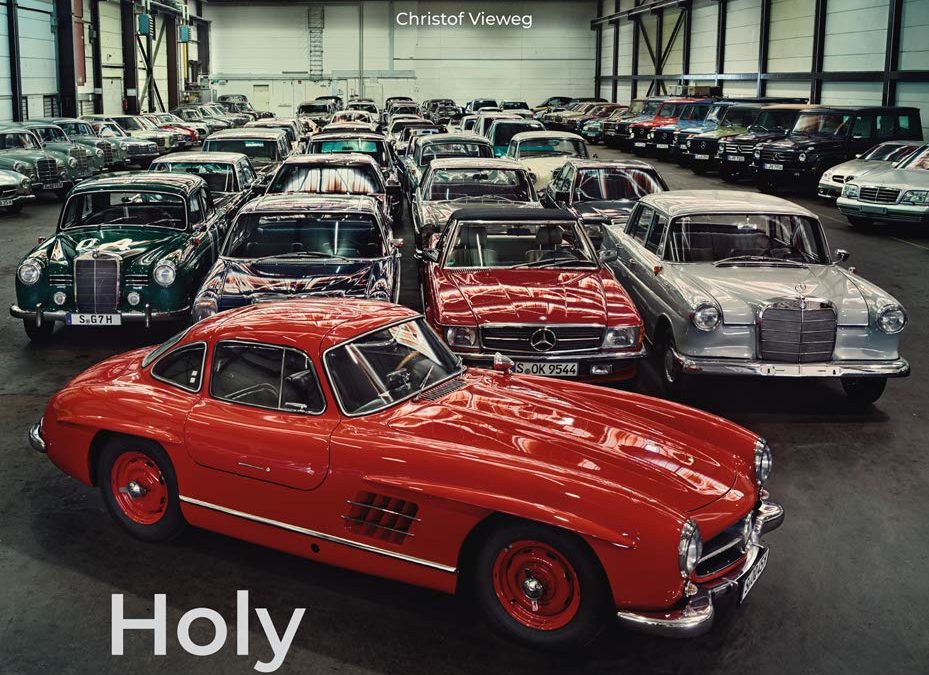
A thrilling photographic account of the treasure trove of cars kept by the Mercedes-Benz Museum in Stuttgart that are not currently on display to the public
The Mercedes-Benz Museum in Stuttgart is one of the largest and most visited industrial museums in the world. But the 160 or so automobiles on display are only a small part of the shiny chrome treasures that form the Mercedes-Benz Classic vehicle collection. Another 1,000 historical models are ‘parked’ in secret places outside Stuttgart – these secret places are called the ‘Holy Halls’.
This collection is the treasure trove of the brand. It has existed since 1923 and offers a comprehensive overview of the model history of Mercedes-Benz. Cars with special technology and equipment are stored here, as are the silver arrows of Caracciola, Lang and Fangio, the Pope’s carriages, the state cars of the young Federal Republic of Germany or Mercedes models that became collectors’ items due to their prominent previous owners. Some of these exhibits are well protected and waiting in special wooden boxes for their next use at exhibitions, fairs, events or classic car races. Others stand next to each other as silent witnesses of the past. Each time a model is modified, the collection is extended by the last vehicle of the discontinued series, which experts believe will be one of tomorrow’s classic cars.
The ‘Holy Halls’ are not open to the public; enquiries from editorial offices and TV teams have often been rejected. But, during the years 2016 to 2018, almost all the vehicles of the Mercedes collection were photographed. Thus, a unique photographic collection was created, the automobile history from more than ten decades; many of the previously unpublished photographs are exclusively available here in this book. In addition, Mercedes-Benz Classic agreed to open the ‘Holy Halls’ for an external photo team and provide information about the car models stored there.
For the first time, it has been possible to produce a fascinating illustrated book with panoramic and detailed shots from the ‘halls’, and lively photo reports on cars that tell stories – from the first Benz batting motor car to the latest Formula 1 racing car. Equally thrilling are the stories of the unique specimens and prototypes that are stored in the ‘Holy Halls’: Mercedes models that never went into production are presented for the first time. The stories about the selected automobiles of the vehicle collection are supplemented by historical recordings from the Mercedes-Benz Classic archive.

In June 1978, eleven years after he quit Grand Prix motorcycle racing, Mike Hailwood returned to the Isle of Man TT races, probably the most prestigious and certainly the most demanding road race in the world. On a privately entered V-twin Ducati he won the Formula One race, beating the works Hondas of Phil Read and the late John Williams, and breaking the lap and race records.
It may have seemed a fluke; it certainly was a fairy-tale – until 1979. Fifth in the Formula One race, despite losing top gear and his battery, first in the Senior, and second by only 3.4 seconds in the Classic – probably the finest and closest-fought race the Island has ever seen. Hailwood proved, if anyone doubted, that he was still the greatest motorcycle racer of all time.
Mike the Bike – Again, written by his manager and friend, Ted Macauley, is the account of his dramatic comeback, from the original wild idea to his final race. More than this, though, it is a study of a remarkable man in a remarkable world, and of the races, the machines, and the men who ride them.
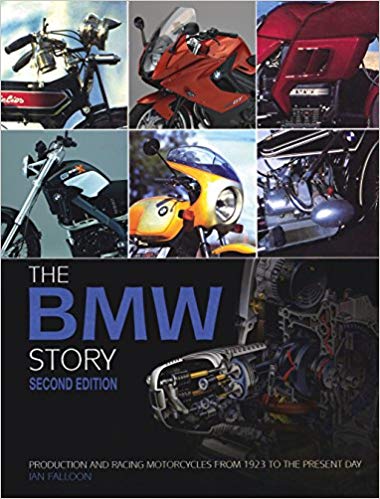
This new edition of Ian Falloon’s classic book on the history of BMW Motorcycles brings the story right up to date, and now includes all models from 1923 right through to 2019.
Over the past 80 years, BMW motorcycles have provided a unique alternative to those of other manufacturers. Some motorcycles may have been faster, certainly others were cheaper, but with their emphasis on quality and reliability, none have emulated the practicality of a BMW. With its commitment to ease of serviceability, the BMW motorcycle has become the preferred choice for hundreds of thousands of motorcyclists around the world. BMW motorcycles are made to be ridden, and if the journey includes a mixture of straight roads and bends, there is no better motorcycle. Factor in the best range of factory luggage and accessories available, and the success of BMW motorcycles isn’t surprising. Ownership of a BMW is also generally a long-term affair, a refreshing change from the current trend towards almost instant obsolescence.
Falloon is a prolific author and one of the world’s foremost motorcycle historians with years of experience. His other BMW books include BMW Boxer Twin Bible,BMW R90S, and The Complete Book of BMW Motorcycles.
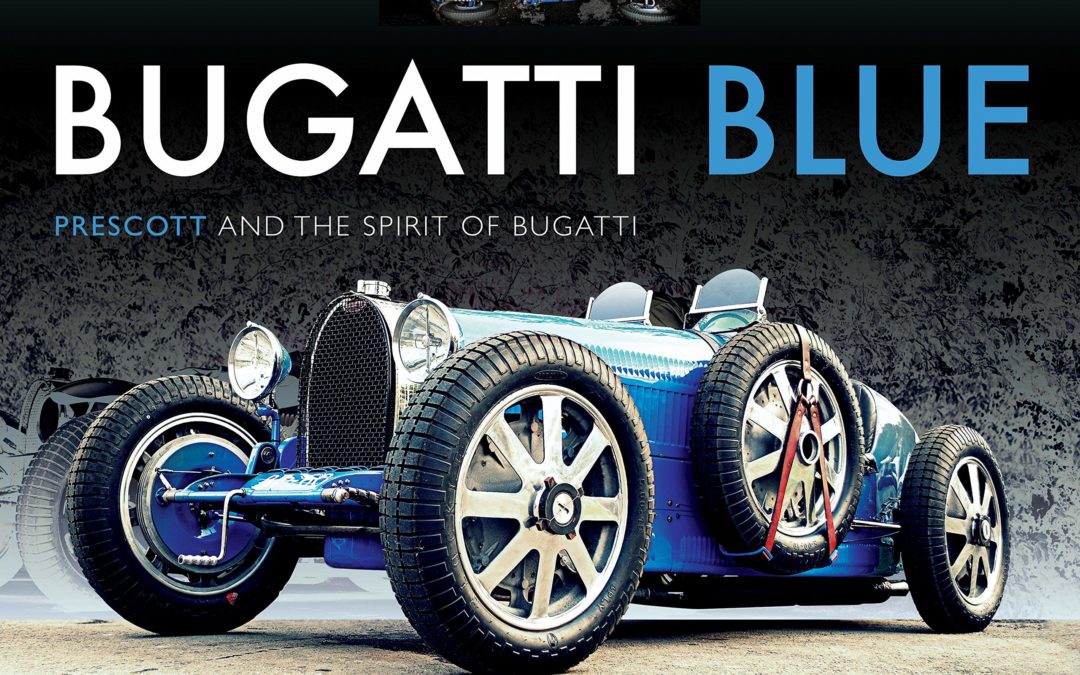
The British have had an affair with Bugatti for decades and perhaps Prescott Hill-Climb in Gloucestershire is the place where that relationship has reached its highlights across the decades. This collection of photographic images captures the brilliance of Bugatti design amid Bugatti blue at Prescott’s wonderful natural amphitheatre in the Cotswolds – to which visitors, Bugatti owners, enthusiasts and addicts have travelled from all over the world to gather and to race up the hill.
The author has spent years around old cars, often visiting Prescott and its home to the Bugatti Owners Club – which itself celebrates the 80th anniversary of its base at Prescott in 2018 and, the Club’s own 90th anniversary in 2019.
In this collection of over 200 photographs, much of the masterworks of Molsheim are captured in action and at rest, at the altar of British Bugatti enthusiasm. Herein are wonderful moments and memories of old Bugatti cars, their owners and drivers, and other vintage and classic cars in VS-CC action at this revered location.
This new collection of stunning images, allied to a concise narrative (with assistance from Bugatti experts), should provide the classic car enthusiast with something new to accompany their own memories amid a record of Prescott and the Bugatti Owners Club events and Veteran Sports-Car Club days.
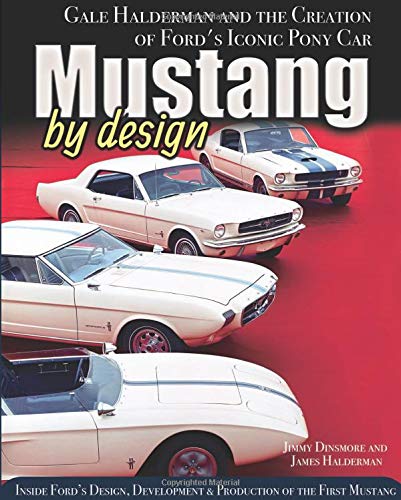
Without question, the 1964-1/2 Mustang is one of the most important and influential cars in automotive history. When Ford launched the Mustang, it created an automotive revolution. Award-winning designer and stylist Gale Halderman was at the epicenter of the action at Ford, and, in fact, his initial design sketch formed the basis of the new Mustang. He reveals his involvement in the project as well as telling the entire story of the design and development of the Mustang.
Authors and Mustang enthusiasts James Dinsmore and James Halderman go beyond the front doors at Ford into the design center, testing grounds, and Ford facilities to get the real, unvarnished story. Gale Halderman offers a unique behind-the-scenes perspective and firsthand account of the inception, design, development, and production of the original Mustang. With stinging losses from the Edsel fresh in minds at Ford, the Mustang project was an uphill battle from day one. Lee Iacocca and his assembled team had a herculean task to convince Henry Ford II to take a risk on a new concept of automobile, but with the help of Hal Sperlich’s detailed market research, the project received the green light. Henry Ford II made it clear that jobs were on the line, including Iacocca’s, if it failed.
The process of taking a car from sketch to clay model to prototype to preproduction and finally finished model is retraced in insightful detail. During the process, many fascinating experimental cars, such as the Mustang I two-seater, Mustang II prototype, Mustang Allegro, and Shorty, were built. But eventually the Mustang, based on the existing Ford Falcon, received the nod for final production. In a gala event, it was unveiled at the 1964 World’s Fair in New York. The Mustang received public accolades and critical acclaim, and soon it became a runaway hit. After the initial success, Ford designers and Gale Halderman designed and developed the first fastback Mustangs to compliment the coupes. The classic Mustang muscle cars to follow, including the GT, Mach 1, and others, are profiled as well.
The Mustang changed automotive history and ushered in the pony car era as a nimble, powerful, and elegantly styled sports coupe. But it could so easily have stumbled and wound up on the scrap pile of failed new projects. This is the remarkable and dramatic story of how the Mustang came to life, the demanding design and development process, and, ultimately, the triumph of the iconic American car.
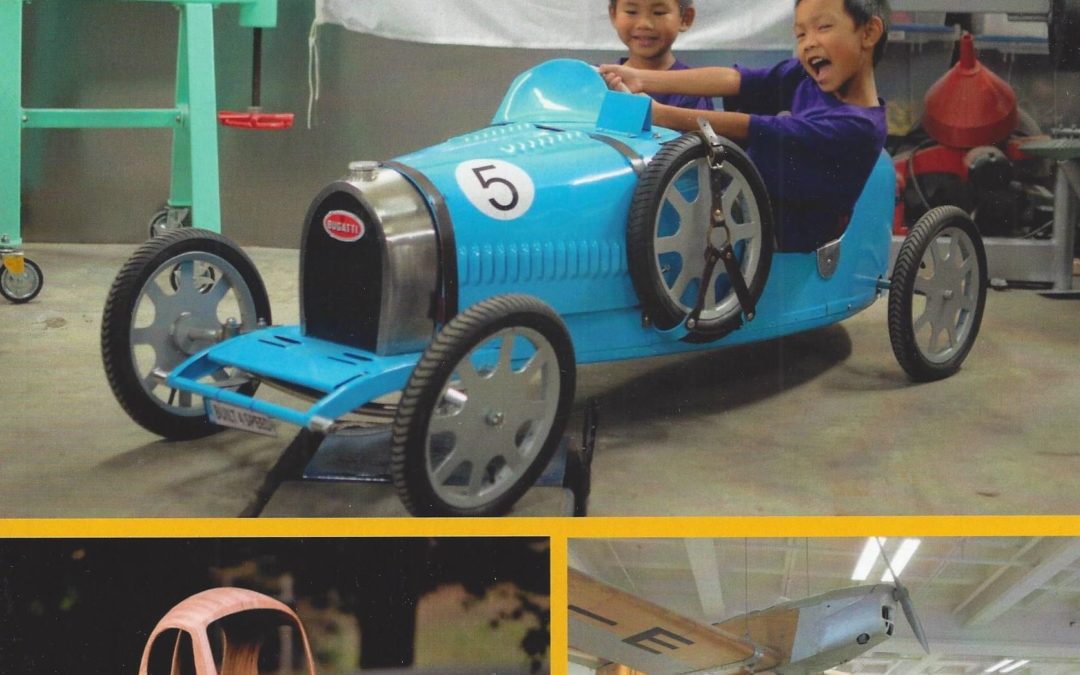
Preface: Saving Tim Barton’s Greatest Work ; Chapter 1: Building the Heinkle Microcar – • From Big Bombers to Bubble Cars • The Bubble Bursts • Building Bubbles • Bubble Brethren • Bubble, Bubble, Toil, and Trouble • American Bubble Tops •; Chapter 2: The Josie; Chapter 3: Micro Coachbuilding – Tools and Machinery – • Hobby Kings • Little Things Mean A Lot • The World’s Most Popular Child’s Car, The Bugatti Type 52 ‘Baby’ • Chapter 4: The Secret Wood & Metal Wars – • Introduction • Enter the All Steel Bodies • A Startling Notion • Bean Counters and Oak Doughnuts • Row, Row, Row Your Egg Shell • The Dodge Brothers and Their Budd • Put a Lid on It! • The Wood War Erupts • All-Steel to All-Unit Construction • The Forgotten Heroes of Stamping •; Chapter 5: Coordinated Measurements – • When in Rome • Sailing Lessons • Buehrig Builds a Bridge • Striking the Right Cord • Putting Your Money on the Table • High School Hero • Burning Bridges • NVisioning the Future • Belgian Bugatti Builder • Scanning for the Masses • The Eyes Have It • ; Chapter 6: Work Fixtures; Chapter 7: Parting & Perforating the Quickwork Way; Chapter 8: Joining Cutting Welding – Tools Rediscovered – • Welders at War • Family Affairs • The Man Who Didn’t Invent the Cleco • Let the Lawsuits Begin! •; Chapter 9: Rolling Folding and Edging – Early Tools and Pioneers; Chapter 10: Ending at the Beginning – Early Metalworking Machines and Techniques; A Tribute to Timothy Barton: Remembering My Brother

Build and modify your Jeep CJ to unlock its full potential with instruction from Jeep guru Michael Hanssen.
In Jeep CJ 1972-1986: How to Build & Modify, Michael covers all of the systems that can be upgraded to improve your Jeep’s performance. Upgrades include suspension components such as springs, shocks, and steering modifications; driveline components including differentials, transmissions, transfer cases, and axles; engine upgrades including engine swaps; wheel and tire upgrades; aftermarket accessories; armor such as skid plates and bumpers; brake upgrades; and more.
Identifying the Jeep CJ series vehicles as the most popular off-road vehicles of all time may actually qualify as an understatement. They really are that popular. The CJ series arguably started after World War II with the CJ-2A being introduced to the masses, and while the early CJs have their share of enthusiasts, the largest group of enthusiasts began their love affair with the AMC-powered Jeep CJ-5s beginning in 1972. Joined by the longer-wheelbase CJ-7 models introduced in 1976, the CJ models were wildly popular through their discontinuation in 1986, when the Wrangler was introduced. These were the only models originally equipped with V-8 engines in any meaningful way. This era combined the ruggedness of the early Jeeps with some of the advancements and horsepower of a more modern era; it makes a platform that is both fun to own and to modify.
Whether you are looking to get into serious off-roading or just want to make your classic CJ a little more fun, this book will be a valuable tool in your shop or library.

All air-cooled models 1970-1996 (Except R45, R65, G/S & GS)
Before the /5 series, BMW had a reputation for producing expensive and idiosyncratic touring motorcycles. But the /5 changed that. Although still expensive, the market was opened to a new world of riders, and during the 1970s the air-cooled boxer evolved into the ground-breaking R90S and R100RS. These were amongst the first motorcycles with factory-fitted fairings and they also offered class-leading performance. Even when BMW decided to discontinue the twins in favour of the new four-cylinder K-series in 1984, demand for the older boxers forced BMW to reconsider. The boxer was resurrected and continued for more than a decade.
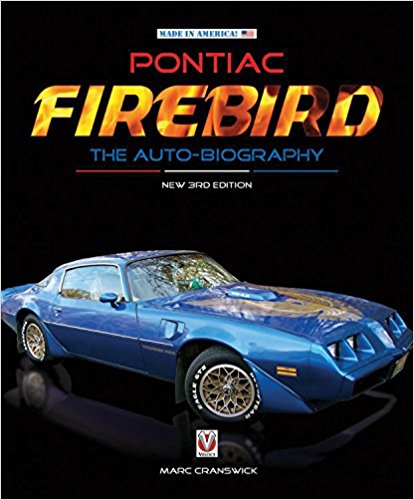
Over a 40 year period the Pontiac Firebird has earned a unique place amongst speedy domestic cars. What started out as another contender in the “me too” Mustang pony car race ended up becoming so much more. Only Pontiac could have come up with a coupe like the Firebird, and it was the Firebird that kept the performance fires burning once the mighty GTO was gone. The Firebird has garnered a reputation for being larger than life and many have come to view it as a large car, but that was not always the case. Pontiac’s Firebird was originally a small US car, classified as a sport compact. In the days when people used the terms personal car and specialty car the Firebird wasn’t even all that big. However, after the first major gas crunch viewpoints altered. One thing that didn’t change was Pontiac’s commitment to keeping their Bird flying high.
The Firebird altered significantly through its lifetime, reflecting general changes and trends in the auto world at large. The Firebird’s tale reflects the development of the mainstream domestic car in the modern era. V8s, turbo V8s, turbo V6s, HO V6s, overhead cam I6s and even a Super Duty four banger. If there’s a performance avenue to be explored then the Firebird has been there, and Pontiac never quite gave up on the hope of using a transaxle.
Popular with car fans and in the sales charts, the Firebird has had a high profile both in television and at the movies. The Pontiac Firebird has also received its fair share of attention from hot-rod shops, tuners and car customizers. As per Pontiac tradition the Firebird delivered what folks expected in the real world. Even during the lean years the Firebird kept the 400 cube 4 speed dream alive when others had moved on to paint and tape specials. Fast cars didn’t die out in 1973, they just started wearing the “Screamin Chicken” on their hoods.
As a collector car the Firebird has all the credentials. A strong fan base, wide variety of power train and trim options, various low volume and commemorative models, and a healthy helping of nostalgia thrown in for good measure. A number of Firebird models are already valuable classics, but certain younger versions can be counted on as some of the fastest appreciating collector cars of today and tomorrow.
The Firebird legend just gets bigger. From the go faster 1960s, gas mileage and pollution controlled 1970s, performance renaissance of the 1980s, through to the indifference of the 1990s. The Firebird was always there, this is its story. Cutting edge research and over 320 photos bring this in-depth, incredibly detailed story to life.
This edition feature an extra 40 images and new text.
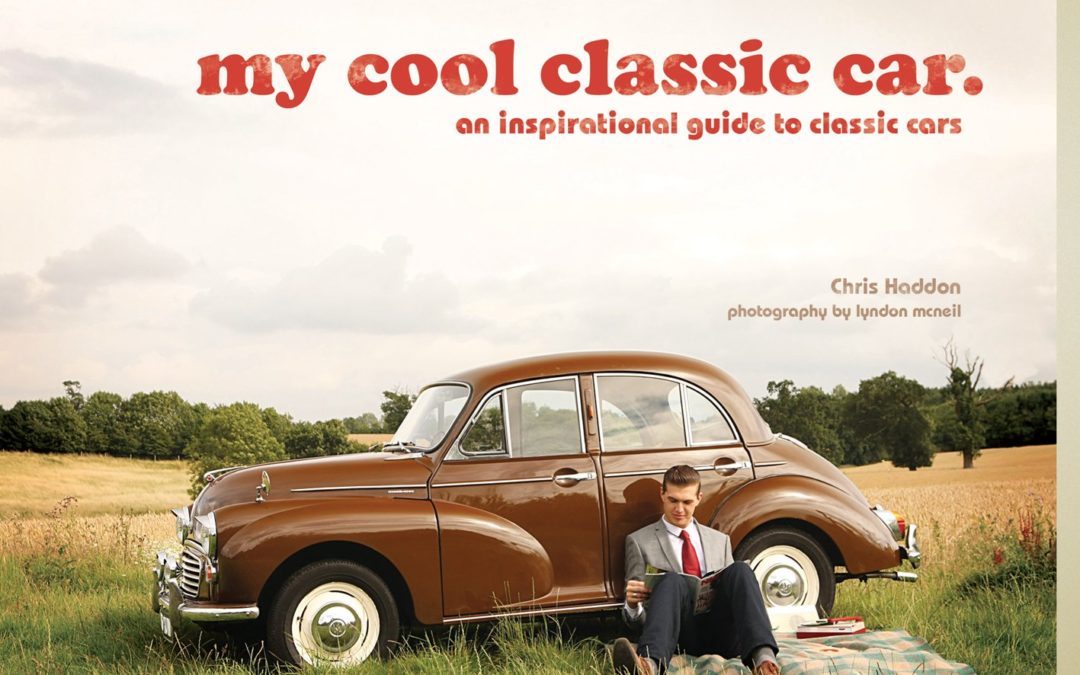
A celebration of our love affair with the car, from the humble Citroen 2CV to the sleek Mercedes 300 SL Roadster, with owners’ stories and vehicle notes
Forty two vehicles from around the world are featured in this gem for vintage car and retro design enthusiasts, including the small but perfectly formed Fiat 500, the Bavarian Goggomobil, Willys WW2 Jeep, the Plymouth Belvedere with its extraordinary trademark wings, the popular and trustworthy Morris Minor, and the Mini, the design success of the 1960s. Cars are frequently an expression of their owners’ personalities, and the wealth of examples and owners’ stories included here are testament to this. The book also includes details of extraordinary journeys, some short and some long, that some of these cars have made—London to Mexico and 2,000-mile round trips to Italy, along with heartwarming stories of how a car has become a priceless part of the family. The photography focuses on the design specifics which have earned these cars the label “classic,” while the owners’ stories and accompanying vehicle notes, which explain the influence of car design on the wider design community, offer interesting insights as well as inspiration to the design conscious. It is guaranteed to leave the reader contemplating the joys of embarking on a road trip in any one of the iconic cars featured.

The Isle of Man TT 2015 fuelled by Monster Energy was a record-breaking affair that had it all: sunshine, drama, excitement and a sensational comeback to rival Mike Hailwood’s.
Anticipation was high before the start of the race with an entry list that was a veritable “Who’s Who” of the World’s elite road racers.
Any of the top ten or so riders were in with a chance of a win in any of the solo classes and there were plenty of quality sidecar crews determined to make an impression on the podium places.
No fans can have left the Isle of Man disappointed with what unfolded – surely TT 2015 proved to be one of the best meetings of the 21st Century, and maybe of all time?
Lap and race records tumbled throughout the week, there were new faces on the podium and some that fans might have thought would never been seen on the top step again.
For once the Isle of Man was blessed with wall-to-wall sunshine for race week and it led to some of the closest racing ever seen on the 37.73 mile public road Mountain Course as heroes of the road like John McGuinness, Ian Hutchinson, Guy Martin and Michael Dunlop got down to business.
All-in-all it was as action-packed as anyone could wish for and throughout it all our cameras were on hand to catch the highlights.
With the best bits of all seven solo and both sidecar races, plus lots of the atmosphere away from the races, this is the comprehensive, indispensable Official Review of the Isle of Man TT 2015.

The Isle of Man TT 2015 fuelled by Monster Energy was a record-breaking affair that had it all: sunshine, drama, excitement and a sensational comeback to rival Mike Hailwood’s.
Anticipation was high before the start of the race with an entry list that was a veritable “Who’s Who” of the World’s elite road racers.
Any of the top ten or so riders were in with a chance of a win in any of the solo classes and there were plenty of quality sidecar crews determined to make an impression on the podium places.
No fans can have left the Isle of Man disappointed with what unfolded – surely TT 2015 proved to be one of the best meetings of the 21st Century, and maybe of all time?
Lap and race records tumbled throughout the week, there were new faces on the podium and some that fans might have thought would never been seen on the top step again.
For once the Isle of Man was blessed with wall-to-wall sunshine for race week and it led to some of the closest racing ever seen on the 37.73 mile public road Mountain Course as heroes of the road like John McGuinness, Ian Hutchinson, Guy Martin and Michael Dunlop got down to business.
All-in-all it was as action-packed as anyone could wish for and throughout it all our cameras were on hand to catch the highlights.
With the best bits of all seven solo and both sidecar races, plus lots of the atmosphere away from the races, this is the comprehensive, indispensable Official Review of the Isle of Man TT 2015.

World-renown, the race 24 Hours of Le Mans draws competitors from France of course, but also throughout Europe, the USA, Japan, but also Venezuela, China, Brazil. That’s why the test is the cornerstone of the new World Endurance Championship FIA.
Since 1978, the annual 24 Hours of Le Mans, through the same editorial team, proposes to revive by the text but especially by the image but also the race preparations and fever that grips Prefecture Sarthe throughout the week prior to departure. All cars and drivers are presented. Preliminary tests at the explosion of joy after the checkered flag through the weighing, the parade of drivers and especially the highlights of each hour, nothing is missing.
For the more passionate, a technical chapter with tables and statistics finishes complete the set. And making use of recognized photographers, the atmosphere that continues to evolve between late afternoon, night and sunrise in a different setting from that of a traditional circuit is fully restored.
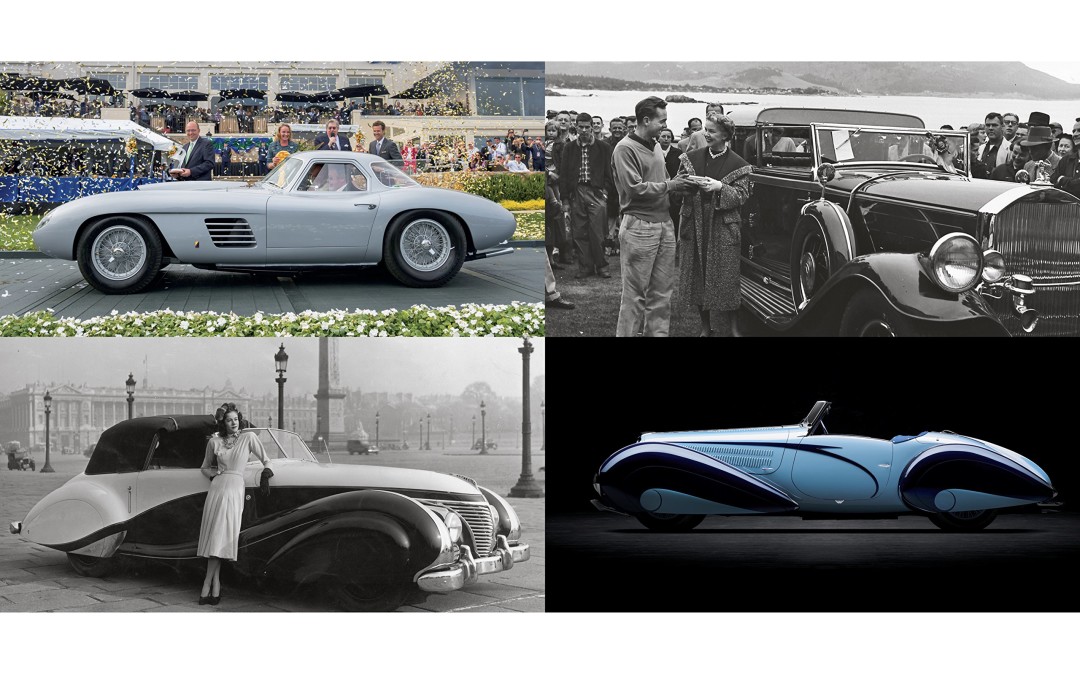
From its earliest moments in Paris to the 18th Fairway at Pebble Beach, from Blenheim Palace in England and on to the Far East, the Concours d’Elegance has long been the pedestal upon which the collector car world has placed its automotive idols. In Concours Retrospective, author Richard Adatto takes you from a time when horseless carriages were adorned with flowers to the modern day phenomenon where the automobile as an art form now commands a global audience. Sandra Button introduces the book while Dennita Sewell, Fashion Curator at the Phoenix Art Museum presents the longstanding connection between couture and concours. Illustrated with more than 200 archival photographs, recent images by Ron Kimball, Tim Scott , Winston Goodfellow and Dirk de Jager and modern studio photography by Michael Furman, Concours Retrospective will lead you on a grand tour of automotive excellence.
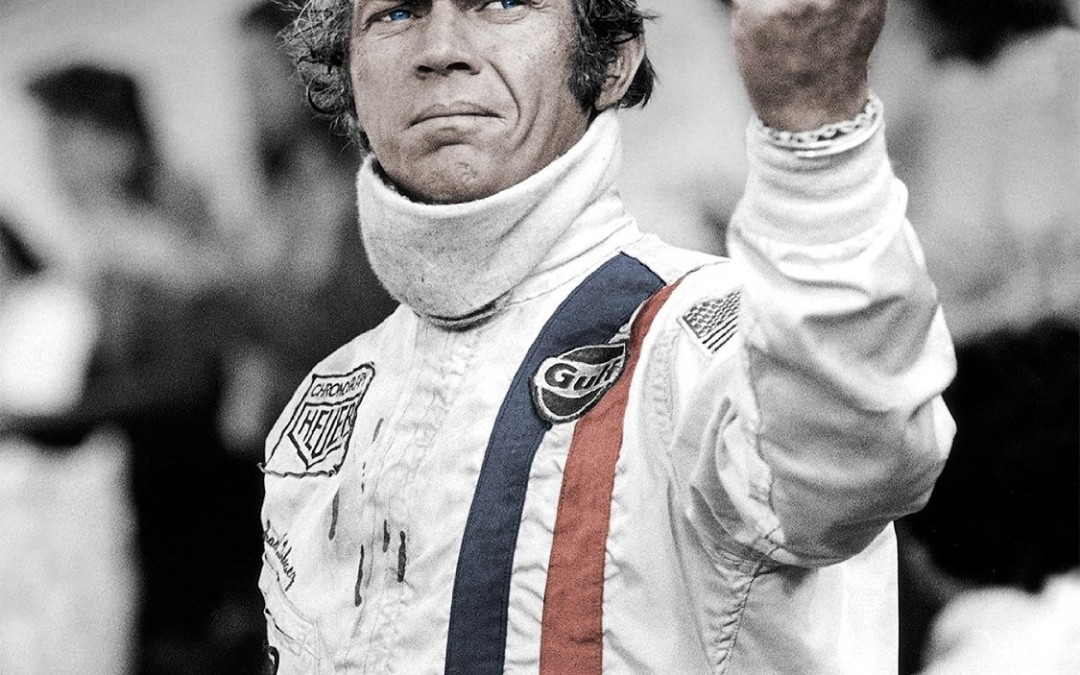
Though Steve McQueen is known for iconic film roles in movies such as The Thomas Crown Affair and Bullitt, the actor was also a real racing fanatic. And in 1971, McQueen tried to combine his passion for racing and filmmaking by directing and starring in Le Mans, a racing drama about the 24 Hours of Le Mans in France, the world’s oldest active sports car event in endurance racing.
From on-set rivalries to financial problems and McQueen’s own personal issues, this documentary takes a look at everything that went wrong with Le Mans. Never before seen footage featuring McQueen is used along with interviews and other private recordings to show just how far the actor was willing to go to bring this racing feature to the big screen.






















